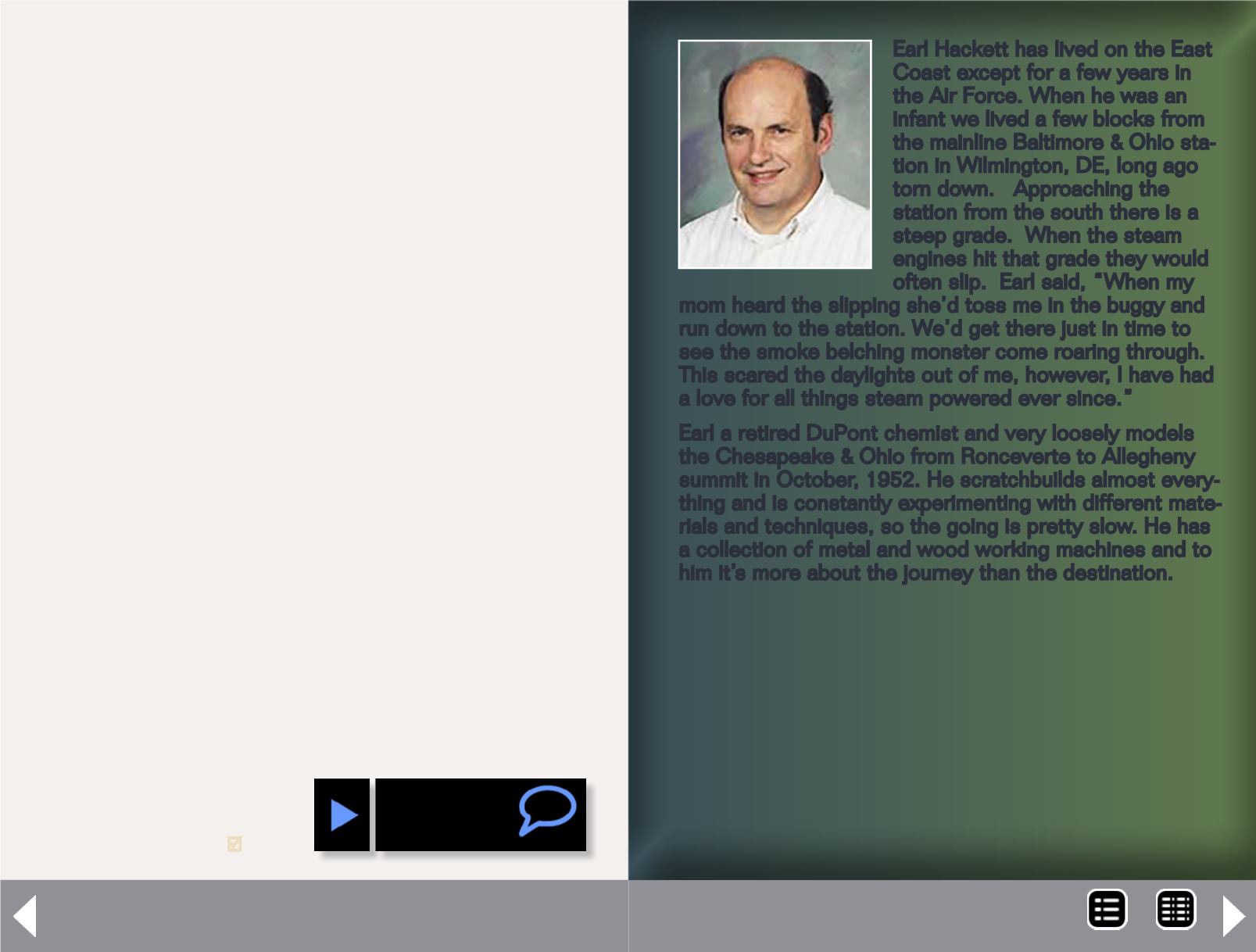
it is pretty darn good. At the present time I would not use it
to produce a steel box car because the poor finish would be
very obvious on a large flat surface. If you are creating a wood-
sheathed maintenance shed, if you align the wood planks in
the proper direction, you get the wood grain for free.
If you want a smooth roof for a passenger car, particularly one
that has compound curves, you can make it a few thousandths
of an inch oversize so you have some material to remove with
320-grit sandpaper, thus producing a very fine surface fin-
ish. Once the surface has been smoothed, detail parts can be
added.
An excellent use for this technology is for models consisting
of a lot of small structural parts, such as a signal bridge. I’m
currently preparing drawings for a large C&O cantilever signal
bridge. Using small magnet wire, I can put the electrical con-
nections inside the larger structural members, and the rough
surface finish will not be noticed on the small parts after being
painted flat black.
There is a stereolithography technology available from
3DSystems that has significantly better resolution that the
Shapeways FUD, but it is also about 10X as expensive. My
design for a C&O large cantilever signal bridge would cost $500
– well beyond my price point.
SketchUp is OK for simple projects, but more complex models
will require the purchase of a 3D program like Rhino or Ashlar.
If you are a first time user
of 3D software, practice on
something simple. There is a
steep learning curve.
Intro to 3D modeling - 9
Earl Hackett has lived on the East
Coast except for a few years in
the Air Force. When he was an
infant we lived a few blocks from
the mainline Baltimore & Ohio sta-
tion in Wilmington, DE, long ago
torn down. Approaching the
station from the south there is a
steep grade. When the steam
engines hit that grade they would
often slip. Earl said, “When my
mom heard the slipping she’d toss me in the buggy and
run down to the station. We’d get there just in time to
see the smoke belching monster come roaring through.
This scared the daylights out of me, however, I have had
a love for all things steam powered ever since.”
Earl a retired DuPont chemist and very loosely models
the Chesapeake & Ohio from Ronceverte to Allegheny
summit in October, 1952. He scratchbuilds almost every-
thing and is constantly experimenting with different mate-
rials and techniques, so the going is pretty slow. He has
a collection of metal and wood working machines and to
him it’s more about the journey than the destination.
MRH-Aug 2014


